Crossings is our newest cable collection, and I really think we had the opportunity to collaborate with some wonderful designers and put together some smashing patterns. These cable collections are regularly the most popular books and patterns that we produce, and Crossings is in good company with Celtic Journey, Woodsmoke, and Windward. If you’ve been wanting to take advantage of the Book Sale, then it’s a great time to get this new collection for 40% off.
For this year’s cable collection, we decided to focus more on historical cables. This means that we were looking not only for traditional motifs and stitches, but also traditional construction. Because of that, many of these sweaters are seamed. Seamless sweaters seem to be all the rage these days, so I thought I’d take the opportunity to explore why seaming can, in fact, be desirable. Seaming comes with three main advantages over a seamless construction: easier sizing, portability and manageability, and most of all stability. Let’s look at some of the sweaters in Crossings that really illustrate these advantages.
Seamed Sweaters



Clarsach Pullover, Turfside Sweater, and Inis Aran
The Clarsach Pullover has the traditional textured stitches at the sides of the body and underside of the arms. This keeps simpler stitches in areas prone to wear, so you don’t spend all your time working fancy cables only to have them pill from friction. This also emphasizes a key benefit to pieced sweaters: sizing. The simple textured stitch provides an easy way to add or take away stitches without interfering with a complicated or large scale pattern. Sure, you can do this in a seamless sweater, but piecing means you can more easily add stitches exactly where you need them. Add a few extra stitches in the front to accommodate an ample bosom, add to the back to fit particularly broad shoulders, or adjust the sleeves for differently sized arms. When you work seamlessly, adding these stitches in one place affects your knitting in other places, requiring careful planning and execution. It’s much easier to get a customized fit with pieces.
The Turfside Sweater is a special case for seaming because it’s the only pattern in this collection that calls for a yarn with alpaca. This emphasizes another major benefit of seaming: stability. Even a wool-blended alpaca like City Tweed doesn’t have the memory and resilience that a 100% wool yarn does. While this translates into incredible softness and enviable drape, it also means growing and stretching. All knitting stretches, but alpaca is just more prone to distorting out of shape than wool. Seams act as linear anchors for your knitting. Any one piece can stretch, but seams create a stable framework that limits how much any piece can distort. Seams help any sweaters, even wool, keep their size and shape, but that’s especially important for alpaca.
The Inis Aran calls for a full 6 inches of positive ease! It’s meant to have a relaxed and casual look, which also translates into a looser garment with a lot of yarn. The largest size will weigh almost 3 pounds! This highlights the next benefit of pieced sweaters: manageability. With seamless sweaters, at some point you are going to have basically the whole sweater hanging off of your needles. Imagine what it would be like to wrangle 3 pounds of yarn in your lap while keeping your stitches even. It also becomes much less portable. All sweaters at some point become “home only” projects, but seamless sweaters reach that point much more quickly. Only the working piece of a seamed garment needs to be carried around, leaving you with just finishing and perhaps a collar to work when the entire project is together.

McKenna Cardigan
When it comes to seams, cardigans are a special case, and the McKenna Cardigan is no different. The key advantages to piecing apply double to a cardigan. If you think of a sweater like a building, then the foundation is actually at the shoulders, with the sides being the walls. Pullovers are essentially tubes, so the sides are attached to each other back and front and have at least some inherent stability, even without seams. A cardigan side’s are only attached one way, so the shape and hang is always going to be more important than it is for a pullover. And it’s especially important for cardigans without buttons to keep everything in place. A cardigan without seams relies almost entirely on the structure of the yarn itself. Seams stiffen and support the walls of your sweater, ensuring your cardigan stays the same size and shape, helping it to lay, hang, and drape correctly.
Seamless Sweaters

Riverfall Pullover
All of that is not to say that seams are absolutely essential. Ultimately what really matters is the design, and nowhere is that more apparent than in the Riverfall Pullover. Full Disclosure: this pattern is made by one of my favorite designers, so I am utterly incapable of an unbiased opinion. Luise’s cables are always stunning. This pattern also contains one clever technique that mitigates some of the problems with a seamless construction: the 3 needle-bind off shoulders. This solid bind off closely imitates a seam at the top of the shoulder, providing stability where it’s most needed and making a good foundation for the rest of the sweater.


Retro Pullover and Lucky Gansey
Two of the other seamless sweaters in the collection, the Lucky Gansey and the Retro Pullover, also have a clever solution to the seaming conundrum: the saddle shoulder. There are many ways of making a saddle shoulder, and both of these sweaters opt for one of the more stable options: picking up stitches. While not as stable as a seam, an edge does have more structure than the middle of your knitting. (Have you ever had to frog an oddly shaped project because your edge was too tight? I know I have.) Picking up stitches from an edge puts a light anchor line in the middle of your fabric, like a false seam. Because of the unique construction of the saddle shoulder, this puts two of these faux seams at each shoulder. Compare that to, say, a raglan sleeve without seams or picked up edges, and you can see how such a saddle shoulder will provide a much more stable foundation.
(Hint: If you hate picking up stitches (like me), then consider getting real familiar with seaming.)
Not Sweaters



Tuckamore Wrap, Lundy Wrap, and Inis Meain
What I’ve been largely ignoring for most of this post is probably what you are all focusing on anyway: the cables. That’s really what we do these collections for: intricate, exquisite, amazing cables. Frankly, I think the cable work stands on its own, and that’s particularly apparent in the handful of non-sweaters in the collection. The Tuckamore Wrap has a more traditional set up, with a statement panel of tightly interwoven cable braids and borders of moss stitch-embedded diamond cables, while the Lundy Wrap has some more complicated weaving cables nestled against each other with a moss stitch border that somehow emphasizes the sinuous cabling while still allowing for a straight edge. If you really want to work on your cable stitches, I suggest one of these wraps, since you don’t have to worry about construction or seaming or anything but getting your cables right.
—
If you enjoyed any of our previous cable collections, you’re sure to love Crossings. And these wonderful sweaters are the perfect excuse to learn to love seams too. You can get the entire collection as a print book or eBook, or you can buy each pattern individually as a downloadable pdf. (Also remember that all books are currently on sale, so you can get a print copy of Crossings 40% off for just $17.99, less than $2 per pattern, if you order before February 13th.)



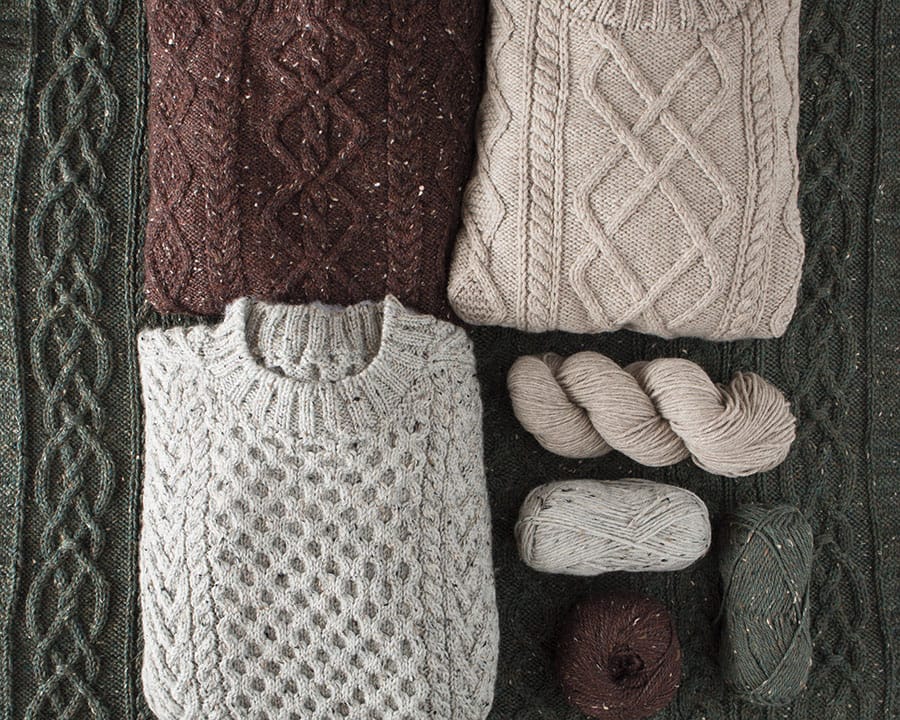
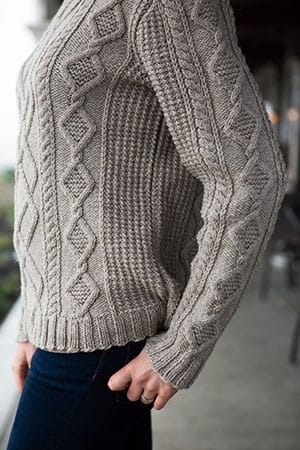
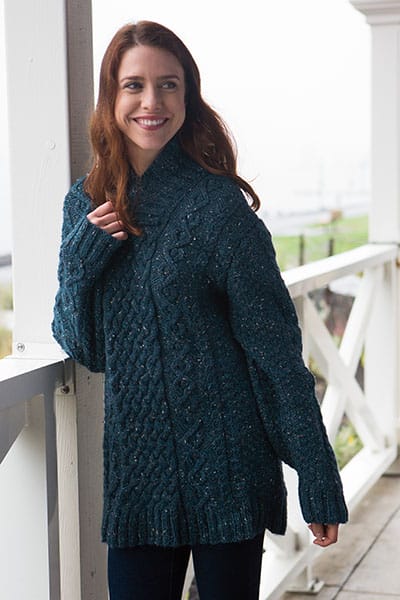
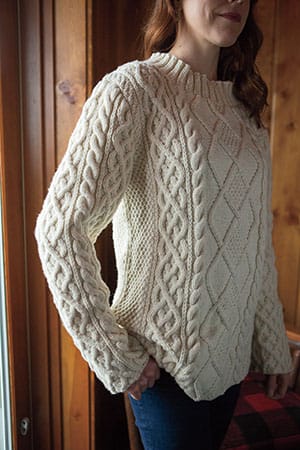
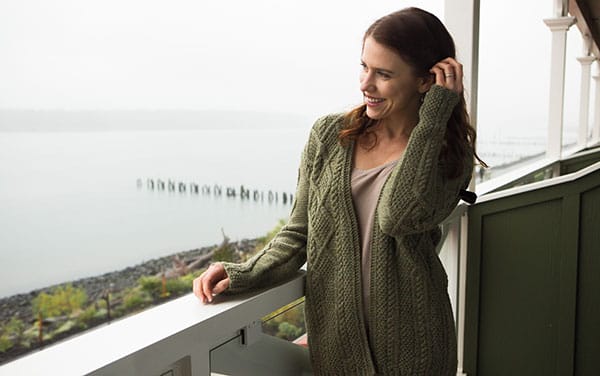
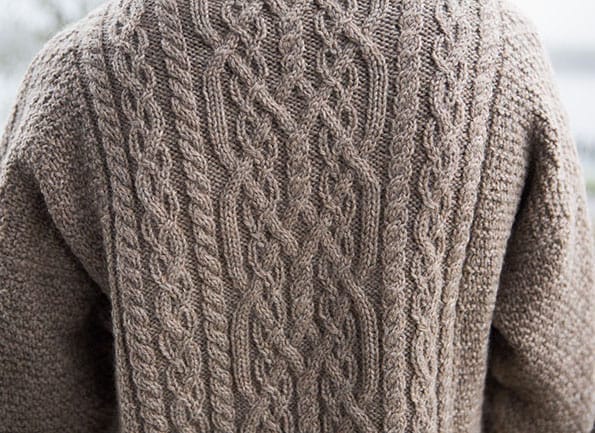
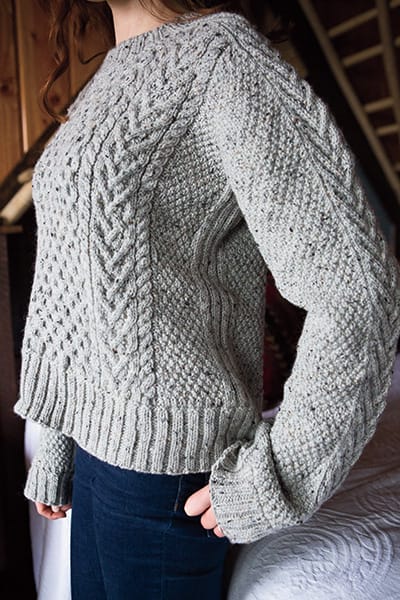
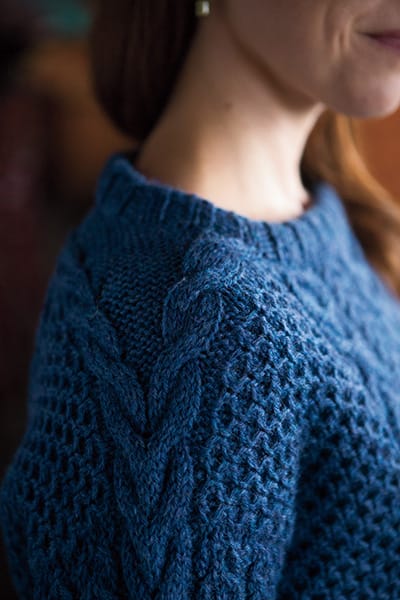
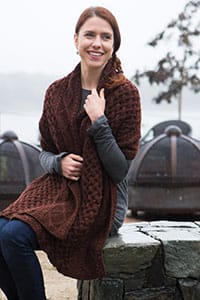
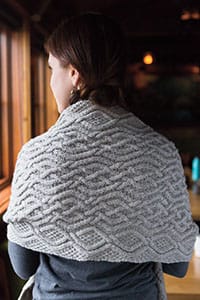
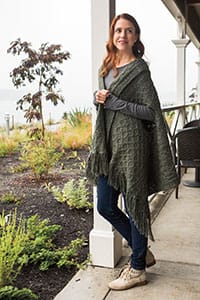

 )
)